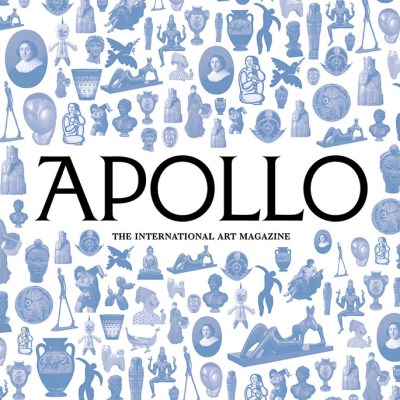To Sheffield, where the university is showcasing its Private Presses Collection by hosting a month of events centred on artists’ books, in conjunction with Bank Street Arts. A recent two-day symposium, ‘Art, Poetry and the Making of the Book’, brought together three veterans of British book-art – Tom Phillips, Ian Tyson (founder of Tetrad Press) and Ronald King (founder of Circle Press) – with Sam Winston, an artist associated with Arc Editions, a collective of book-artists who have all drawn inspiration from King’s Circle Press.
The four artists’ work represents a series of searching investigations into the visual and sculptural limits of language and the book. Tom Phillips has been working and reworking A Humument (1966–present day) for almost 50 years now, using a sort of cut-up technique to uncover poems of strange, spiky, sometimes erotic beauty from the dry bones of a forgotten late-Victorian novel, and painting in the negative space around the poems to create a hybrid work of limitless energy, charm and invention.
In 2012 the fifth edition came out from Thames & Hudson in a handsome paperback, and this year the work had a new incarnation in the form of A Humument app – which is in some ways the most definitive version yet, since the pages are presented on the back-lit, hi-res screen of the iPad with great sharpness and clarity, and the work can be re-shuffled in different orders, as was the intention of the very first, unbound version.
Ian Tyson published that first edition of A Humument, printed on unbound fascicles held in specially made boxes, at Tetrad Press from 1970–3. Tyson’s own work offers a strong contrast with Phillips’s and with Ronald King’s: where Tyson is a formalist and almost a minimalist, stripping the elements of visual and verbal expression back to Zen-like black and white forms, where each character and line becomes intensely ponderable, King is a sort of maximalist, his works full of vibrant colour, abundant allusiveness and dense screen-printed imagery, always eager to burst out into three dimensions, like in his classic pop-up book, Bluebeard’s Castle (1972).
Sam Winston takes this impulse further, by freeing signs from the limits of the book altogether into pure three-dimensional form, as in Folded Dictionary, which transforms the 20 volumes of the Oxford English Dictionary (second edition) into a set of concertina’d paper sculptures, by folding all 80,000 pages individually in different directions. A flock of words struggling to take flight.
Plans are afoot at the university’s Special Collections to publish the complete texts of the four artists’ talks from the weekend. This will be a lovely thing to have in print. The symposium went deeply into the challenges and excitements of working as an artist in intermedial forms – as when Tom Phillips reflected on changes in the forms that A Humument has taken, from a laboriously screen-printed set of boxed fascicles 50 years ago, to an app and a USB flash-drive of audio recordings today:
The whole business of making books changes as you go on. New technologies become available: I love them all. As soon as the app became available for the iPad, I thought ‘Terrific, now people will see this in these beautiful colours’ – better than the original, because it’s like church windows or something. So now the whole thing is on an app. And then somebody said, ‘Well, why don’t you do a vocal recording of yourself reading it, the authentic person, the real thing?’ And of course my vanity once again was appealed to, and easily replied ‘Yes’ to any question involving it, so I thought I’d do a recording of at least part of it, which I made into a USB. I didn’t know what that stood for, but someone told me later on: ‘Universal Serial Bus’. Explain that to me one day and I’ll be grateful. Anyway, a Universal Serial Bus appeared, and apart from being the publisher of a huge book, I became the publisher of the smallest thing which you can imagine, which is this credit-card sized thing which looks like the personal credit card of the Duchesse de Berry, very luxurious and beautifully made. It’s not even the whole thing; the whole thing is this thing here, this end bit which winkles out. That is now what I’m down to. But actually, in the world of technology and in the world of personal improvement, it’s the best thing, you know? It’s fucking amazing!
‘Opening up the Book’ is a programme of events hosted by the University of Sheffield in conjunction with Bank Street Arts until 30 November 2013.
Books from the University of Sheffield’s Private Presses Collection can be viewed at any time during Library opening hours by appointment.



